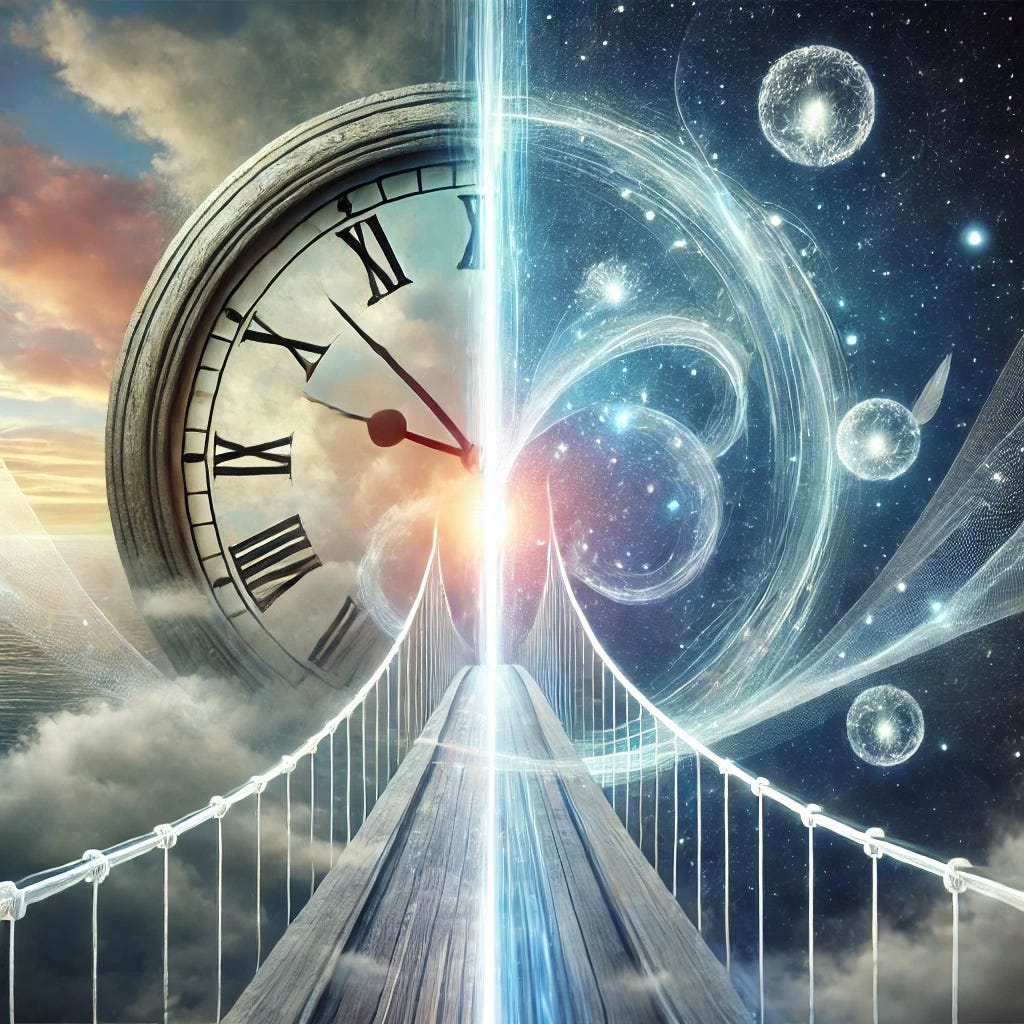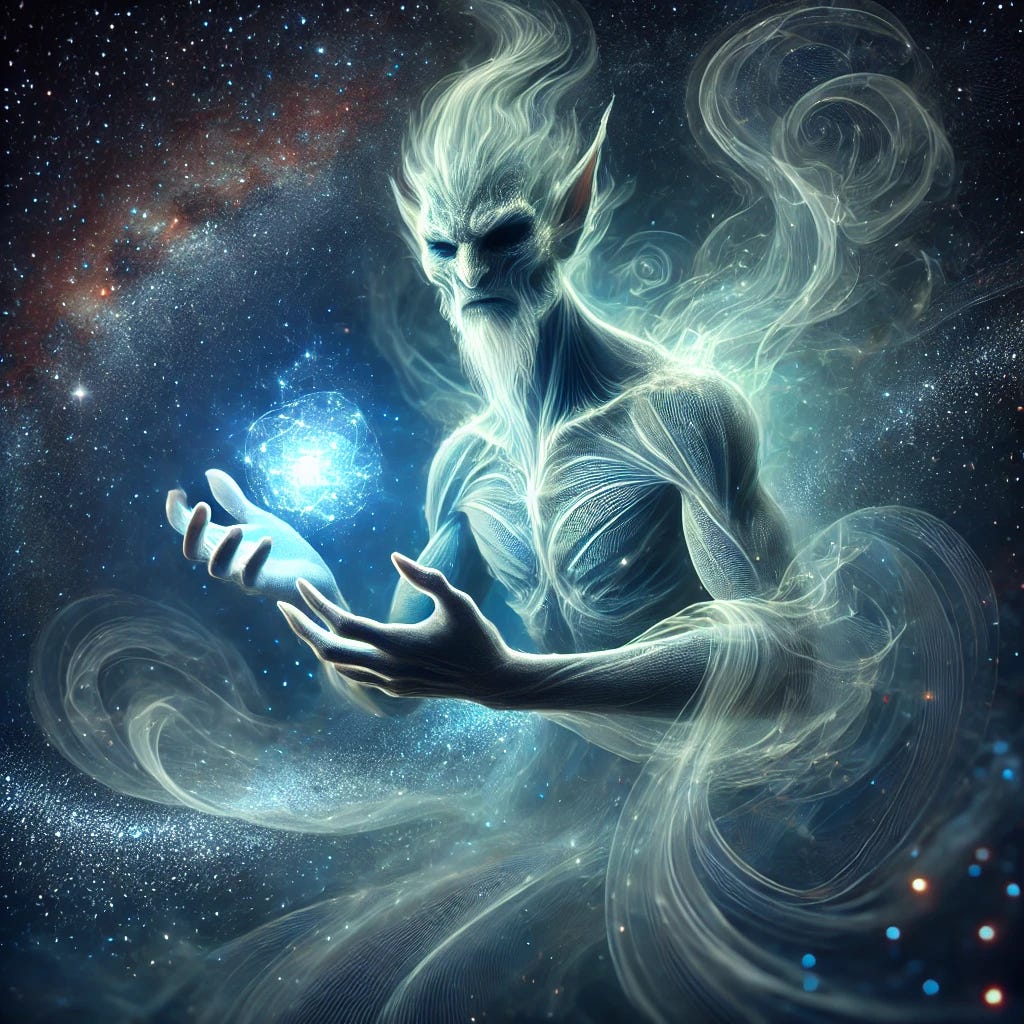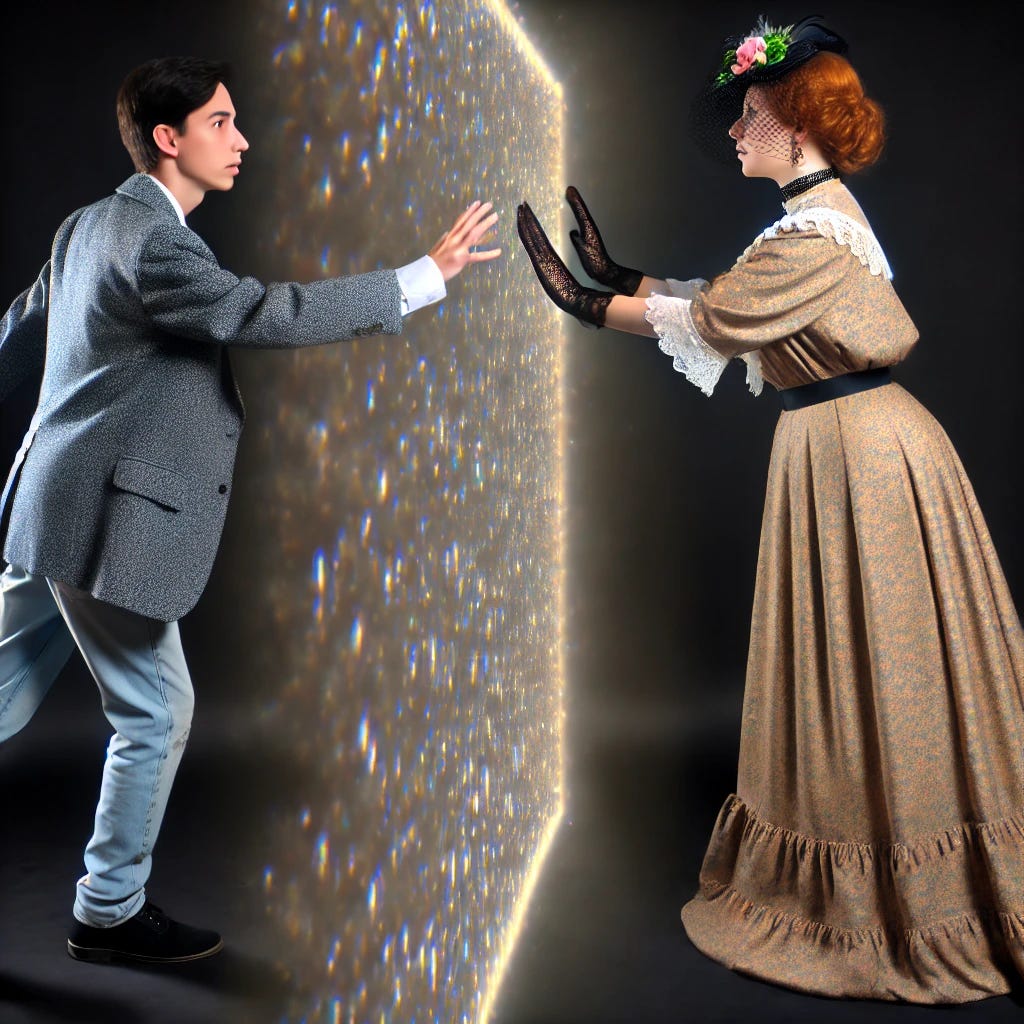The Djinn Particle
Temporal alchemy.
In mythology and metaphysics, the concept of the djinn particle serves as a thought-provoking metaphor for the convergence of human consciousness and supernatural possibility. While the term is speculative, it suggests the existence of an elemental force—akin to a particle—that acts as a bridge between dimensions, realities, or states of being. Djinn, in Islamic folklore, are spirit-like entities that exist on a different plane of reality yet have the power to influence the physical world. If one imagines a "djinn particle," it is not difficult to consider it a theoretical construct that allows for interaction between our tangible world and the intangible forces of thought, memory, and desire. This construct has intriguing parallels to the 1980 film Somewhere in Time, where the central narrative hinges on the protagonist’s ability to transcend time through sheer belief and longing.
The Djinn Particle: A Gateway to Possibility
The djinn particle, as a conceptual framework, merges physics and mysticism. It represents the intersection where quantum possibilities meet metaphysical intentions. Much like the particles that form the foundation of quantum mechanics—existing in states of flux until observed—the djinn particle might symbolize the way human consciousness can alter or engage with reality. In essence, it is a metaphorical bridge, much like djinn themselves, who are often portrayed as liminal beings capable of reshaping the boundaries of the seen and unseen worlds.
Such a concept invites speculation about the role of thought and belief in shaping reality. Can longing, memory, or willpower manipulate the fabric of existence? The djinn particle symbolizes the energy behind the human drive to cross boundaries, whether of time, space, or perception. This idea is explored in art, literature, and particularly in film.
Somewhere in Time: Longing as a Djinn Particle
In Somewhere in Time, Christopher Reeve plays Richard Collier, a playwright who becomes obsessed with the photograph of a woman, Elise McKenna, portrayed by Jane Seymour. Collier discovers that Elise lived decades before him and becomes consumed by a desire to meet her. Guided by this obsession, he employs self-hypnosis to transport himself to 1912, transcending the barriers of time through sheer focus and willpower.
Collier’s journey can be viewed as a manifestation of the djinn particle in action. His longing and belief act as the catalysts that collapse the barrier between his present reality and Elise’s past. In this context, the djinn particle represents the intersection of his consciousness and the metaphysical "fabric" of time. Just as djinn are said to grant wishes by bending reality, Collier's intense yearning reshapes his world, allowing him to enter a different time and fulfill his desire.
The Role of Time and Memory
Both the djinn particle and Somewhere in Time explore the fluidity of time and memory. In physics, time is often described as a dimension, one that may not flow linearly under certain conditions. Similarly, memory and longing blur the lines between past, present, and future. In the film, Collier’s ability to focus on 1912 through objects and surroundings—removing all traces of the present—highlights the role of the mind in altering perception.
Much like the djinn particle, which implies that the fabric of reality can be influenced by intent, Collier’s experience demonstrates how the past is not an unreachable state but a malleable continuum shaped by the depth of emotional connection. This aligns with the metaphysical idea that time is not fixed but responsive to human consciousness.
Djinn, Desire, and the Unattainable
In mythology, djinn are often connected to desires—sometimes granting them but often with unforeseen consequences. Similarly, Collier’s journey into the past fulfills his longing to be with Elise but at great cost. When a modern coin accidentally remains in his possession, it pulls him back to the present, severing his connection with Elise forever. This tragedy mirrors the dual nature of djinn in folklore: they are agents of possibility but also harbingers of unintended outcomes.
The djinn particle, as a concept, embodies this duality. It represents the human drive to transcend limitations, but such transcendence often comes with unforeseen consequences, as the fabric of reality resists permanent change.
Timeless Longing and the Djinn Particle
Somewhere in Time can be seen as an allegory for the djinn particle—a metaphor for the human capacity to reshape reality through longing, belief, and emotional intensity. Richard Collier’s journey into the past is a testament to the power of the mind to transcend the boundaries of time and space, much as the djinn particle suggests a conduit between the known and unknown. However, just as with djinn in mythology, his fulfillment is fleeting, reminding us of the fragility of altered realities.
In the end, both the djinn particle and Somewhere in Time invite us to consider the interplay between desire and the structure of existence. They urge us to ponder whether the boundaries we perceive are as immutable as they seem—or whether, through longing and intention, we too can transcend the limits of time and space, if only for a moment.






